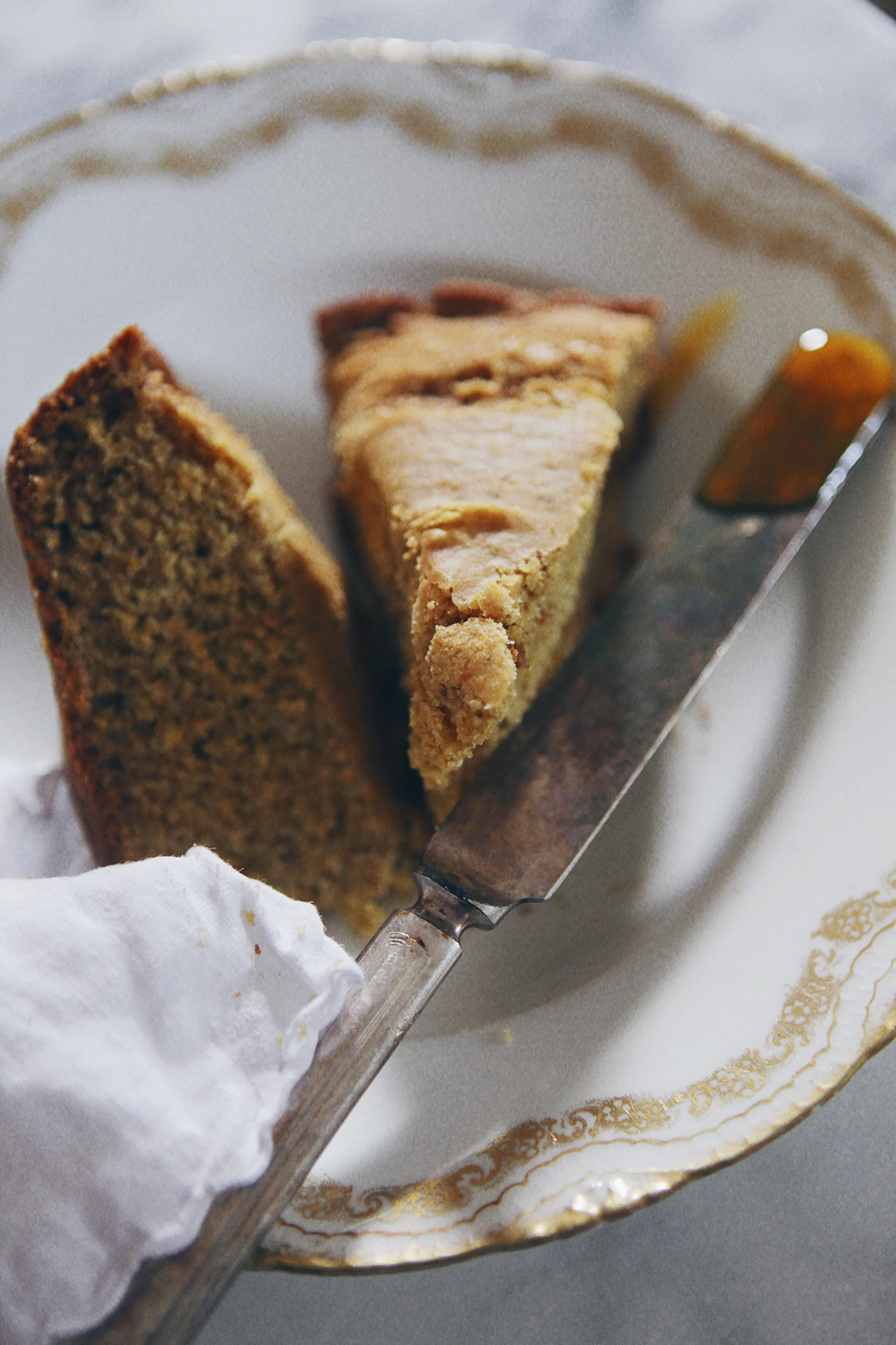Gluten-Free Cornbread
When my partner and I lived near the West TX-Mexico border, I got more intrigued about Southern cooking. Specifically, soul food, which was a long-held interest of mine since middle school.
I moved to the United States when I was 10-years-old from Istanbul, Turkey. Despite Turkey’s own history of slavery & migration from Africa—my father’s side being one of those Afro-Turks—it’s a mum topic. Learning the exact day, month, and year of wars at grade school yet only recently learning of this—a part of my familial history—felt oppressive; the cords of a lineage suffocated and suffocating any words I could express to describe it.
Our sudden overnight move to the U.S. from Turkey and exposure to a similarly Western yet vastly different culture was what kindled a somber interest. Because of said lack of conversation around racial history in Turkey—and well, here as well as it’s not even infinitesimally enough—the slavery and eventual Civil Rights movement here drew me in.
And now, more than ever, this history is critical. We must not only educate ourselves on the continuing racial history (and do so with. and. through. black. educators. period.), we should also take the time to investigate this history in other major aspects of our lives, such as the foods we consume.
Cornbread was my starting point and I failed at it terribly, over and over again, until this presentable recipe. I suppose that’s a metaphor, too, that can be extended to white womxn on how this will be their emotional experience doing this work learning about the history of racism. Black people, as well as other people of colour such as Latinx, Native Americans, and other minorities, do not owe it to anyone to present this information on a pretty platter. This extends itself to other areas of “disbelief” white people, from the news of lynchings of Ramon Smith & Jarron Moreland in May spoken on horrifyingly minimal platforms to the shock around the treatment of immigrant families, which has been an issue since the Obama era.
It’ll be a hard swallow, and it can be approached defensively or humbly—do the latter. Learn as if you’ve never been taught this history before, because you frankly have not been through the white mouths and hands of erasure writing textbooks.
Don’t do this work apologetically, because as the recently-passed Ntozake Shange aptly stated in her poem “Sorry”: “one thing i don't need / is any more apologies / i got sorry greetin’ me at my front door.” Instead of apologising, educate yourself. Do so without the need for self-congratulatory social media posts. Post about the educators who are enlightening you, but rather than revolving it around you, center it on the educator. Some admirable educators you can follow include Rachel Ricketts, Rachel Cargle, ShiShi Rose, Layla F. Saad, and Ericka Hart just to name a few.
Share this information as you serve this cornbread, breaking barriers over bread. Seeing fragile tears? Sop ‘em up with a piece of bread and continue on. This work isn’t just a matter of Election Day, it’s every. damn. day. The only sweetness (or rather lack thereof in the traditional sense of the recipe) will be in the cornbread here.
Ingredients
Recipe adapted from Ariyelle Ressler’s version
Serves 8-10 slices
Keeps at room temperature for four days & refrigerated for a week
1 cup gluten-free all-purpose flour, we recommend buying it in the bulk section to avoid plastic packaging or this version
2 cups gluten-free cornmeal, bulk or this version
1/3 cup coconut sugar or half it for a more traditional cornbread, bulk or this version
2 tbsp raw honey
2 tsp baking powder
1 tsp baking soda
1 tsp sea salt
2 eggs, preferably pasture-raised and/or local
1 1/2 cups milk, we use unsweetened almond milk
6 tbsp unsalted butter, preferably pasture-raised
1 tsp bacon or duck fat, optional
Directions
Preheat the oven to 400°F (200°C). Grease a medium-sized cast-iron skillet with bacon fat or butter, and place inside the oven to heat while you prepare the batter.
In a large mixing bowl, add the dry ingredients of flour, cornmeal, coconut sugar, baking powder, baking soda, and salt. Whisk until well-combined.
Melt the butter until just soft then whisk it together with the eggs and almond milk in a separate bowl.
Pour the wet ingredients into the dry and whisk again. We use and hand-held immersion blender to fully incorporate the ingredients for a softer cake. If you prefer it a bit grittier, simply mix with a spatula or wooden spoon.
Remove the heated skillet from the oven and pour the batter in. Turn the oven down to 350°F (180°C) and bake for 30 minutes, or until the top is brown and an inserted toothpick comes out clean.
Let cool slightly before slicing and serving.



